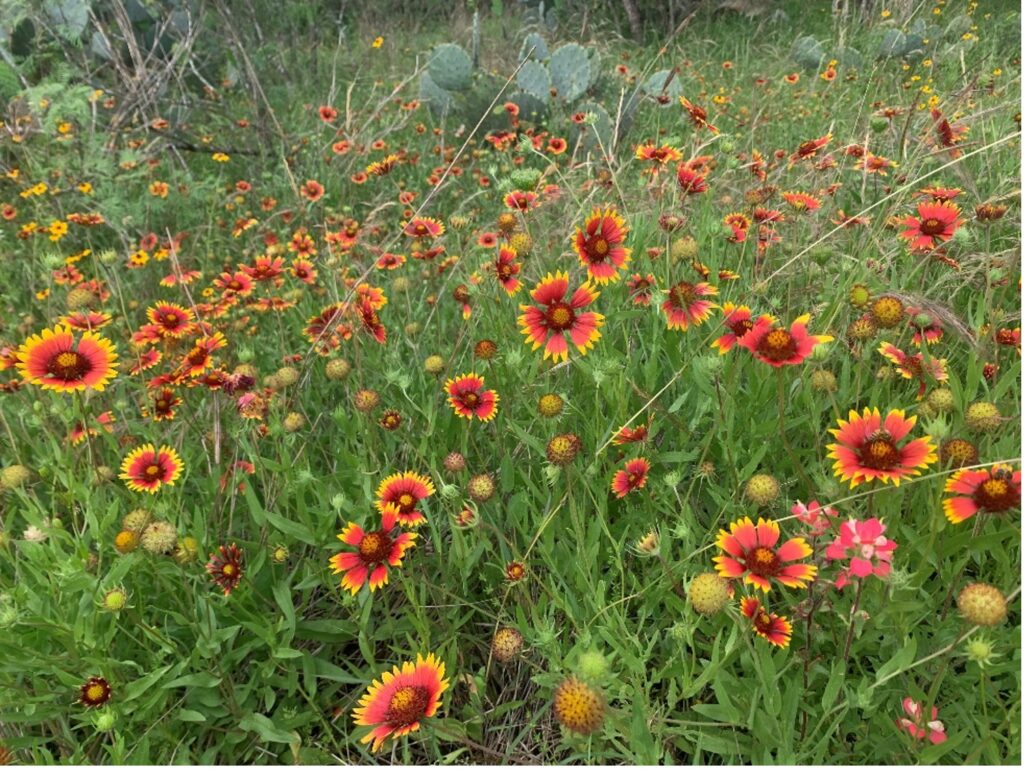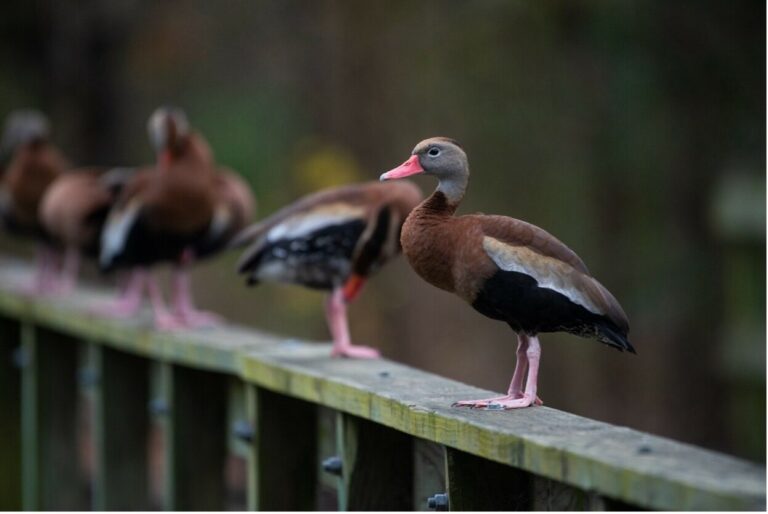Last Updated on February 4, 2025
Have you heard of “No Mow May”? This nature initiative was conceptualized for homeowners and land managers, especially in urban and highly developed areas, to increase ecosystem benefits with minimal work. No Mow May was started in the United Kingdom by a non-profit called Plant Life. In the past few years, it has expanded to communities in the United States. Can participating in No Mow May help our wildlife and ecosystem health in the San Antonio River Basin?
Some key differences exist between the initiative’s country of origin and our south-central Texas climate and geography. Chief among these differences is the start and end of our growing season, which generally is quite a bit earlier and extends a bit later than is typically experienced in the U.K.’s growing season. We also don’t get as much rainfall, even in wetter years.
Therefore, is No Mow May feasible for our river basin’s urban dwellers and property/land managers? It could be! Benefits of avoiding seasonal mowing include 1) longer and more abundant blooms, 2) better flood control or stormwater filtration, 3) habitat and foraging areas for birds, and 4) allowing flowers to produce seeds for next year. What’s incredibly cool about this idea is that this is good for wildlife and people alike! However, there are some potential drawbacks, and alternative modifications are needed to make it better suited to our Texas plants, animals, and climate.
Common sunflower
The biggest drawback of Low Mow May is the prevalence of non-native plants in many people’s yards. Non-native plants can be harmful to our ecosystems and could gain a more significant advantage if they aren’t mowed. Native plants are critical to a healthy ecosystem because they are better adapted to our soils, extreme temperatures, and wet and dry patterns. They have evolved to best support our local wildlife too. If we don’t mow or otherwise manage an area that has non-native plants, then they can more easily reproduce and further displace native plants. However, if you have native plants – show your Texas pride and let them grow!
How to Participate in No Mow May
If you’re unsure what’s in your yard, consider leaving a part to grow without mowing and see what comes to life! You may find that you have native plants like common sunflowers, straggler daisies, native petunias, and spiderwort that come up without needing extra care. In turn, they will provide extra care for birds, butterflies, and bees nearby!
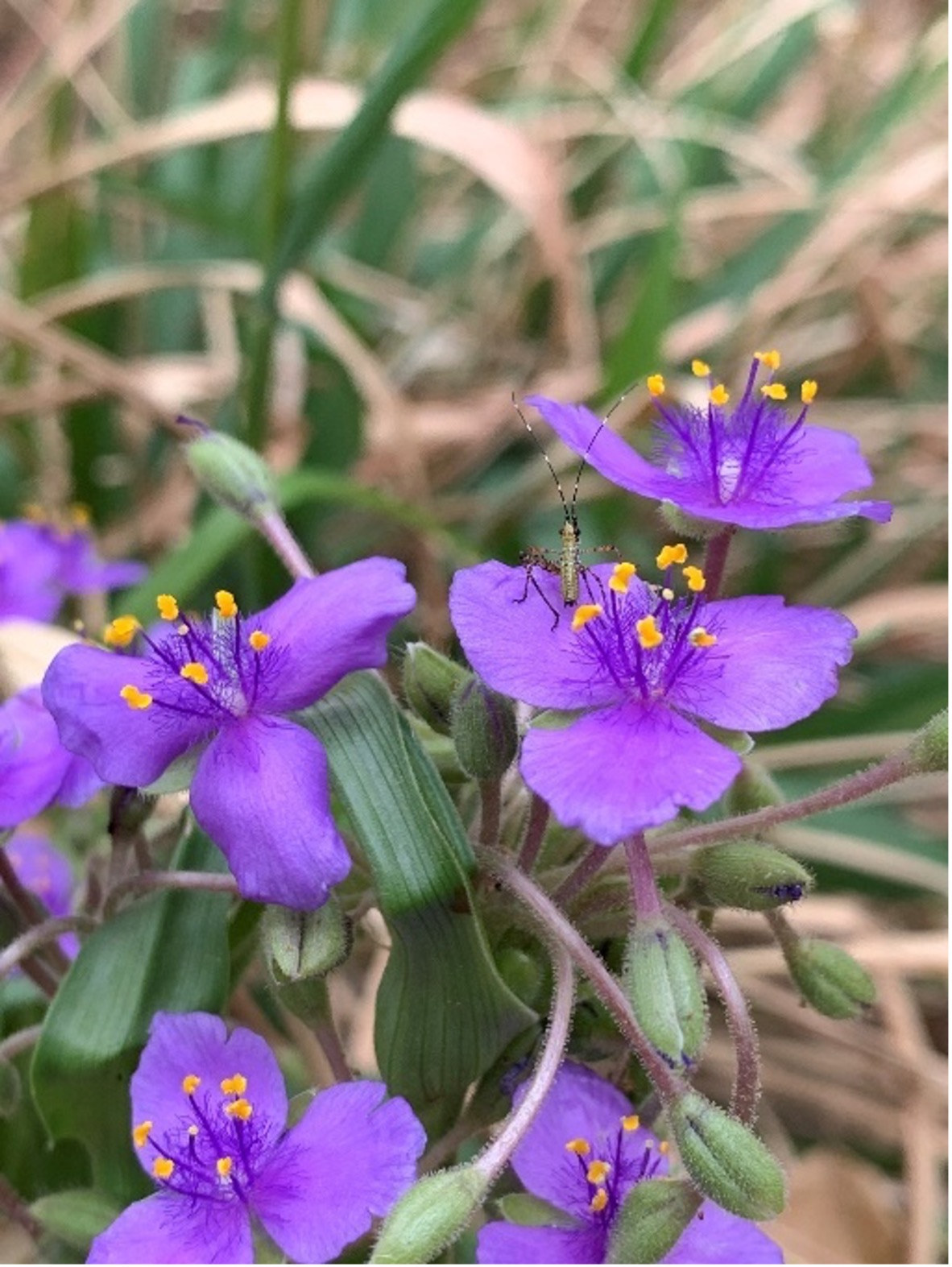
Spiderwort
Not plant savvy? No problem! We have listed some great local resources below to help you create pollinator habitats, nurture natives, or make small changes to your yard or property that can help boost your ecosystem’s resiliency to drought and flood.
Another alternative to No Mow May is to change the frequency of mowing and/or mowing height. Not mowing in March and April rather than May would prolong early spring blooms of native wildflowers like bluebonnets, Indian blankets (aka “fire pinwheel”), winecup mallow, prickly poppies, false dayflower, pink evening primrose, and others! April has been designated as National Native Plant Month – what a great way to pay tribute! Refraining from mowing during these months also helps flowers that are getting ready to bloom (or are continuing to bloom!) in the summer, such as the American basketflower, Texas yellow star, coneflowers, beebalm, scarlet spiderling, and many more!
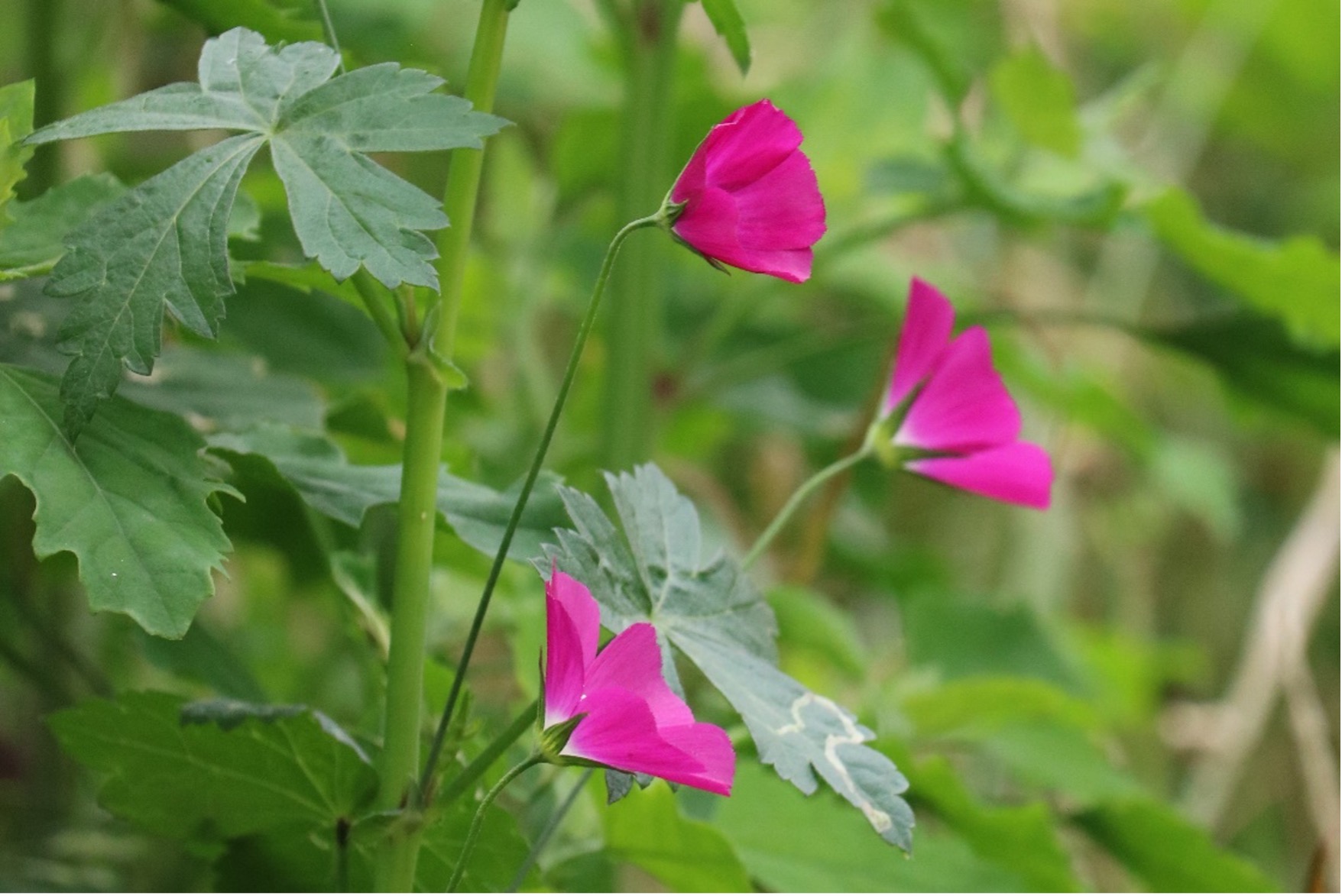
Winecup mallow
March and April are critical months for migrating species as well. Our watershed is an essential stopover for many birds and insects like Monarch butterflies on their annual journey through the Central Flyway. All these animals need shelter, water, and food sources like seeds, insects, or nectar. Leaving early spring blooms like bedstraw and straggler daisy, both common native “weeds” in our area, can be an essential resource to them.
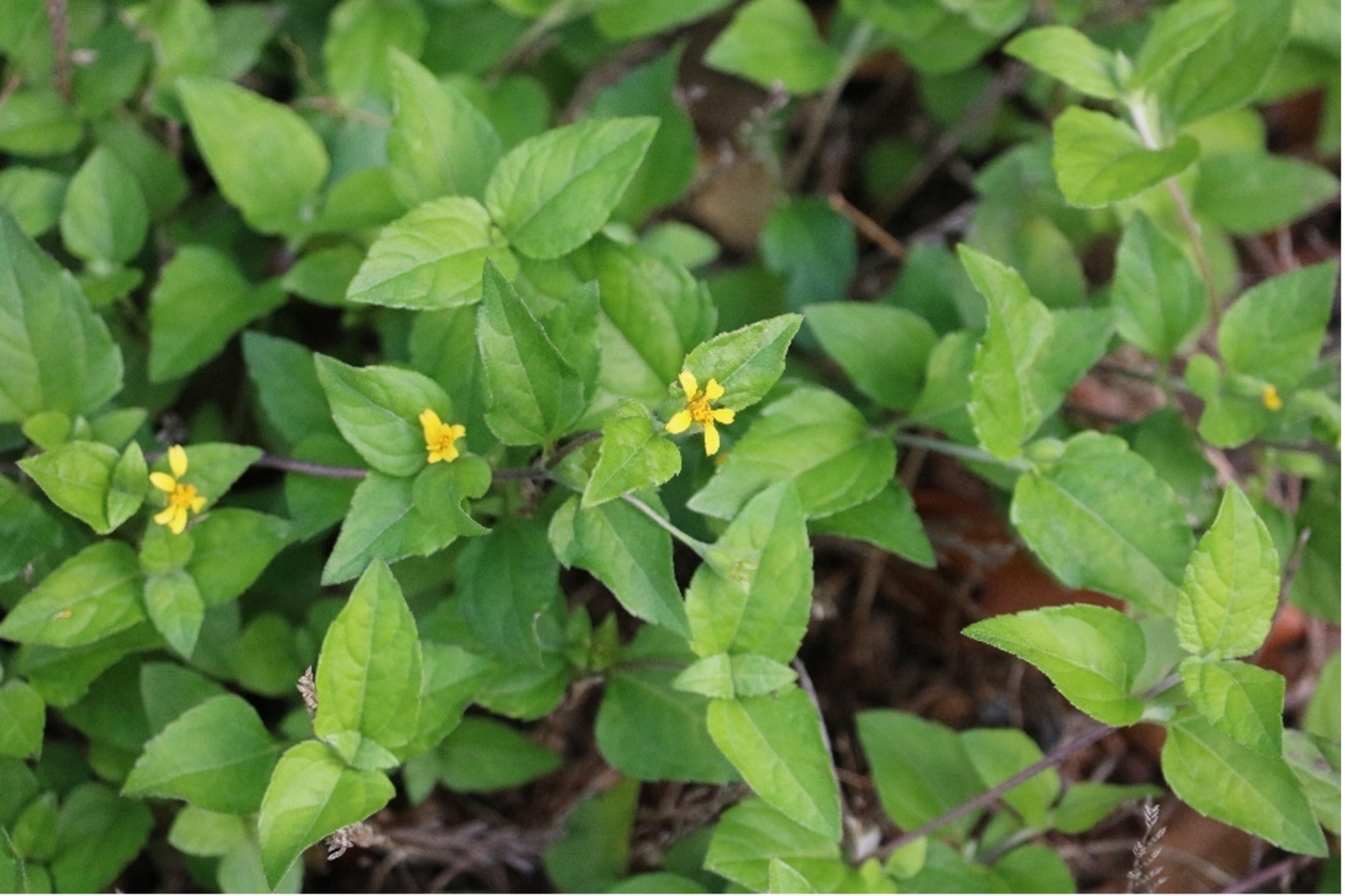
Straggler daisy
If you prefer a tidier look, a good alternative is to mow your yard/lawn a bit higher. Leaving your lawn, regardless of native species, about 3 inches tall can make it more resilient in the Texas heat – read: less brown and thirsty – when the weather gets hot and dry (and stays hot and dry). Higher mowing means less watering as the soil is slightly shaded and potentially fewer weeds. It also allows birds to forage for seeds and insects in slightly higher grass – that sounds like a win-win!
What about my Homeowners’ Association (HOA)?
If taking part in No Mow May sounds more like a pipe dream because of Homeowners’ Association (HOA) scrutiny, you might be happy to learn about Senate Bill 198. Passed in 2013, this bill allows homeowners to plant native plants and take other measures to reduce water use and water waste while promoting a drought and heat-tolerant yard. Homeowners may still be required to submit plans to and adhere to certain rules set by their HOA, but an HOA cannot prohibit their residents from planting native plants, xeriscaping, installing rain barrels, etc.
Another option to consider for tidier-looking yards is replacing non-native turfgrass with short, native grasses! Buffalograss (Bouteloua dactyloides, not Guinea grass), curly mesquite, and blue grama are just three examples of native grasses that stay relatively short and don’t need watering once established. These grasses are hardy Texas natives, drought tolerant, and can provide some ecological benefits even when mowed!
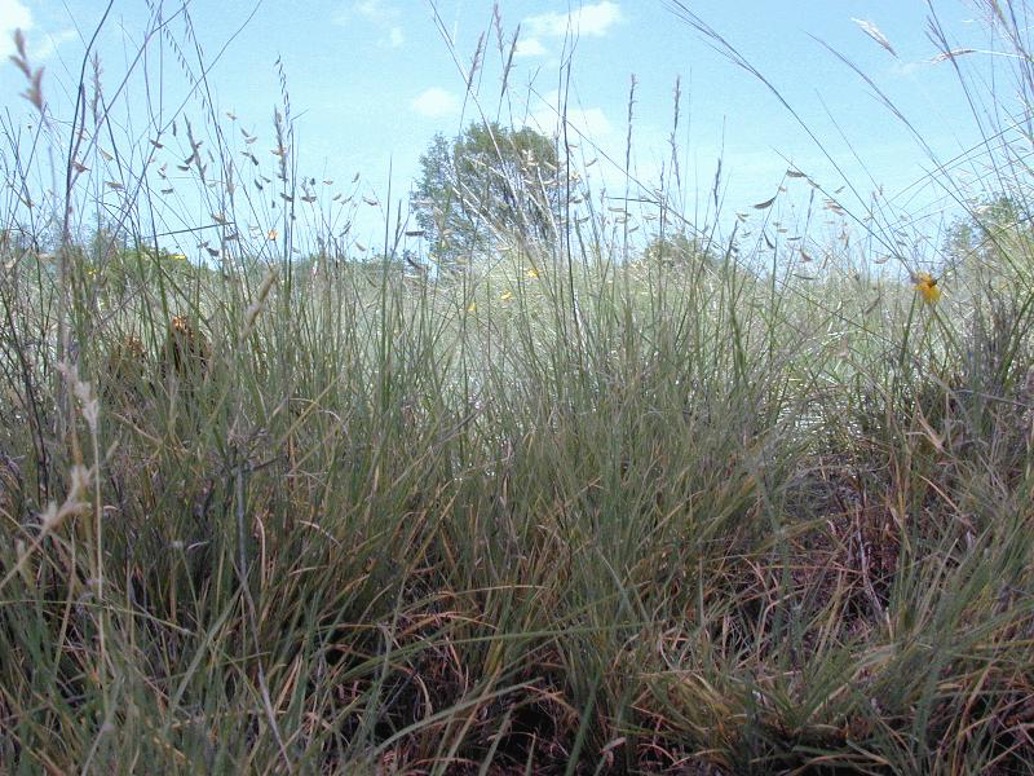
Curly mesquite grass
No Mow May can benefit your community and the San Antonio River Watershed—even in an adapted South Texas approach. Allow your native flowers to bloom and leave their seeds for next year and for the birds over fall and winter! In turn, native bees may be able to nest in the dead stems too. Mowing higher or less frequently could produce a surprise splash of native Texas color and pollinator resources in your yard! It could also make it look lusher with less watering. When we water less, roots will grow out and down in search of moisture, ultimately making them more resilient in droughts and floods – two pinnacles of Texas extremes.
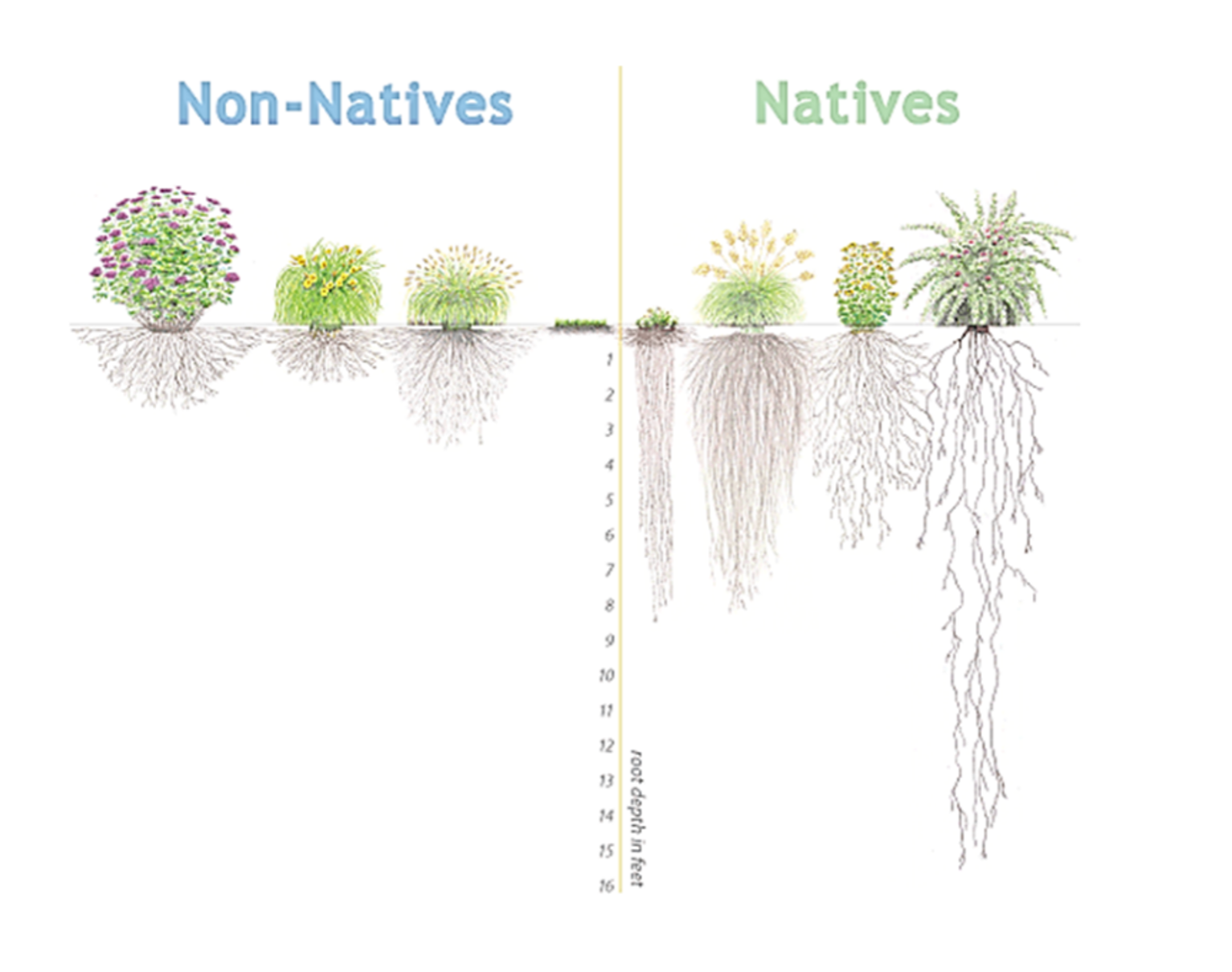
The root structures of non-native vs. native plant species. Note that you can barely see the non-native turfgrass roots! Photo courtesy of Mid-America Regional Council
Take advantage of local experts – see our resource list below – and let your flowers bloom! What do you hope to see blooming in your yard and rain gardens this summer?
No Mow May and Native Plant Resource List
Identifying your plants
Practical management applications for your yard/property
- River Authority Blog: Best Plants for Birds
- SAWS Garden Style: Learn which xeriscape plants are native and non-native in this resource.
- AgriLife Extension Landscaping Education
Learn from the community of native/nature lovers.
- Native Plant Society of Texas
- Texas Master Naturalist Program – Alamo Area Chapter
- Native Prairie Association of Texas
- Texas Butterfly Ranch
Native Plant Nursery/Seed Sources
Join a more extensive network of the environmentally minded!
Plant and flower photo credits: Lee Marlowe, San Antonio River Authority

